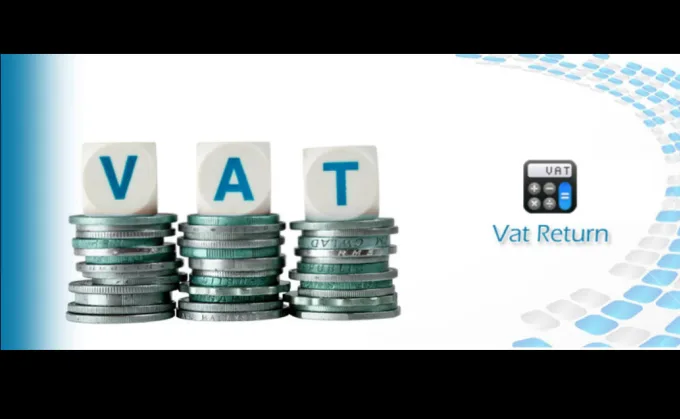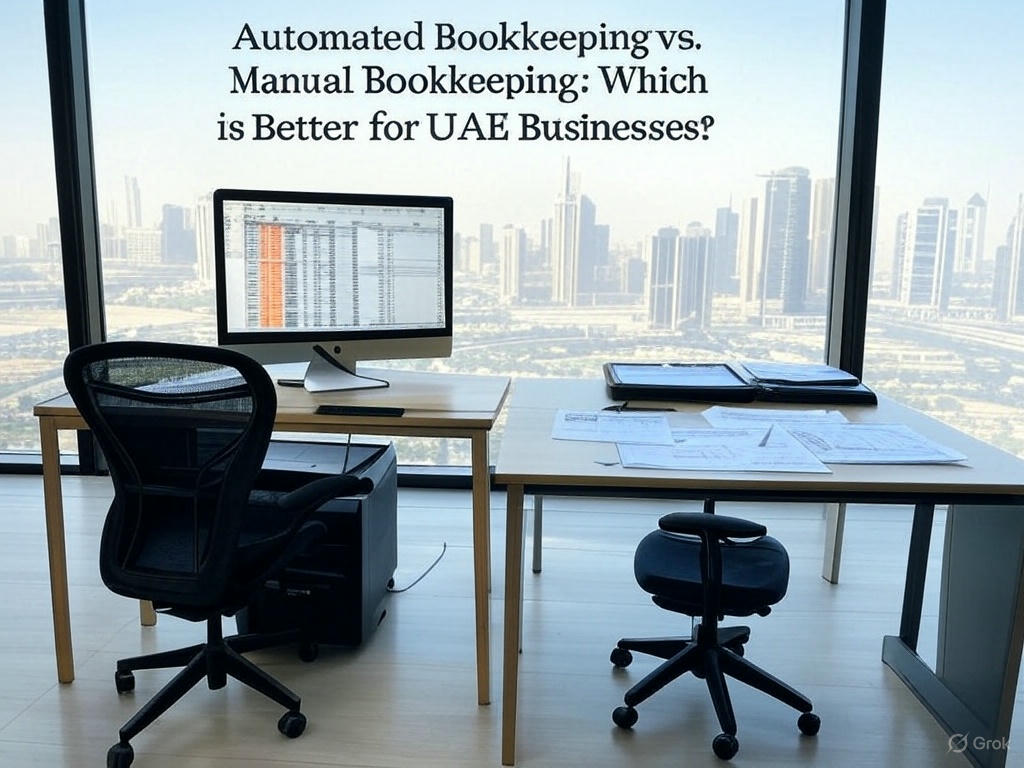
Are you struggling with VAT calculations in your construction business? You’re not alone. At Fandeez, we’ve seen countless construction professionals grappling with the complexities of VAT calculation. Understanding how to calculate VAT in construction company operations isn’t just about compliance—it’s about optimizing your finances and avoiding costly mistakes.
In this comprehensive guide, we’ll walk you through everything you need to know about construction VAT calculation, from the basics to advanced strategies. Whether you’re handling small residential projects or large commercial developments, this article will equip you with the knowledge to manage your VAT obligations confidently and efficiently.
What is VAT in Construction? Understanding the Basics
Before diving into calculation methods, let’s establish what VAT actually means in the construction context. Value Added Tax (VAT) is a consumption tax placed on products and services at each stage where value is added, from production to point of sale. However, VAT in construction industry operations has unique complexities that set it apart from standard retail or service businesses.
Construction companies deal with a variety of VAT rates, exemptions, and special schemes that can significantly impact their financial operations. The construction sector faces particular challenges because projects often involve:
- Multiple suppliers and subcontractors
- Various materials with different VAT classifications
- Long project timelines crossing tax periods
- A mix of labor and materials
- Different property types with varying VAT treatments
For construction company VAT management, understanding these nuances is essential. At Fandeez, we’ve helped numerous construction businesses navigate these complexities to ensure they’re neither overpaying VAT nor risking non-compliance penalties.
Key Factors Affecting How to Calculate VAT in Construction Company
When learning how to calculate VAT in construction company operations, several key factors will influence your approach:
1. Project Type
Different construction projects may qualify for different VAT treatments:
- New residential buildings often qualify for zero-rated VAT
- Commercial properties typically attract standard rate VAT
- Renovation work may qualify for reduced rates in some circumstances
- Mixed-use developments require careful apportionment of VAT
2. Client Status
The status of your client matters significantly when determining how to work out VAT in construction:
- Work for private individuals vs. VAT-registered businesses
- Government or charitable organizations may have special VAT considerations
- International clients may affect place of supply rules
3. Materials vs. Labor
Construction VAT rates often differ between:
- Building materials (typically standard rated)
- Labor costs (potentially reduced rate for certain residential work)
- Professional services (architectural, surveying, etc.)
4. Location and Jurisdiction
VAT calculation construction USA differs significantly from UK VAT construction company requirements. Similarly, construction VAT Australia has its own system, as does VAT in construction India. At Fandeez, we help clients navigate these regional differences to ensure compliance wherever they operate.
Standard VAT Calculation for Construction Services
Let’s explore the fundamental process of how to calculate VAT in construction company operations for standard situations:
Basic Formula
The standard formula to compute VAT for construction services is:
VAT Amount = Net Value × VAT RateFor example, if you’re providing construction services worth £100,000 at the standard UK VAT rate of 20%:
VAT Amount = £100,000 × 20% = £20,000The total invoice amount would be £120,000 (£100,000 + £20,000).
Practical Application
In practice, how do construction companies calculate VAT? The process typically involves:
- Identifying which elements of your project are subject to VAT
- Determining the appropriate VAT rate for each element
- Calculating the VAT amount for each element
- Including these calculations on your VAT invoice construction documentation
At Fandeez, we recommend maintaining detailed breakdowns of all project elements to ensure accurate VAT calculation construction company processes.
Construction VAT Reverse Charge: A Special Consideration
One of the most significant recent changes in construction VAT accounting is the domestic reverse charge mechanism. Introduced to combat VAT fraud, this system fundamentally changes how to calculate VAT in construction company transactions between VAT-registered contractors.
Under the domestic reverse charge construction system:
- The supplier/subcontractor does not charge VAT on their services
- Instead, the customer/contractor accounts for the VAT on their VAT return
- The customer/contractor claims the input VAT construction amount on the same return
This essentially means the VAT is “reverse charged” from the supplier to the customer. For example, if Subcontractor A provides £50,000 worth of construction services to Main Contractor B:
- Subcontractor A issues an invoice stating “Reverse Charge: Customer to pay VAT to HMRC”
- Main Contractor B calculates the VAT (£50,000 × 20% = £10,000)
- Main Contractor B accounts for this £10,000 as both output and input VAT on their return
This system significantly impacts how to calculate VAT in construction company cash flow planning, as subcontractors no longer receive and hold VAT before remitting it to tax authorities.
How to Work Out VAT in Construction for Different Project Types
Different construction projects require different approaches to VAT calculation:
Residential Construction
For new residential construction:
- Construction of new dwellings is typically zero-rated VAT construction
- This includes houses, flats, student accommodation, and certain care homes
- Converting non-residential buildings into residential use may also qualify for reduced rates
For example, when building a new house valued at £300,000:
VAT calculation: £300,000 × 0% = £0 VATHowever, when renovating an existing residential property:
Materials: £100,000 × 20% = £20,000 VAT
Labor: May qualify for reduced rate (5%) in certain circumstancesCommercial Construction
Commercial construction VAT is usually more straightforward, with standard rates applying to both materials and labor. For a £500,000 commercial project:
VAT calculation: £500,000 × 20% = £100,000 VATHowever, when learning how to calculate VAT in construction company projects for commercial purposes, remember that certain energy-saving materials might qualify for reduced rates.
Mixed-Use Developments
For mixed-use developments combining residential and commercial elements, you’ll need to apportion costs appropriately. At Fandeez, we recommend:
- Clearly separating costs that are exclusively for residential or commercial areas
- Creating a fair apportionment method for shared costs (such as by floor area)
- Applying the appropriate VAT rate to each portion
Input and Output VAT Management for Building Companies
Understanding the difference between input VAT construction and output VAT in building industry operations is crucial for effective VAT management:
Input VAT
Input VAT refers to the VAT your construction company pays on purchases:
- Building materials
- Subcontractor services (where VAT is charged)
- Equipment and tool purchases
- Professional services
As a VAT-registered construction company, you can generally reclaim input VAT against your output VAT liabilities.
Output VAT
Output VAT in building industry operations is the VAT you charge your customers on your services and materials. How to calculate VAT in construction company invoices depends on:
- The nature of the services provided
- The status of your customer
- Any applicable special schemes
VAT Return Balancing
On your construction VAT return filing, you’ll:
- Total all output VAT collected
- Subtract all input VAT paid
- Either pay the difference to tax authorities or claim a refund
Fandeez helps construction businesses optimize this process to ensure they’re not leaving money on the table or accumulating unnecessary VAT liabilities.
Regional VAT Differences for Construction Companies
VAT systems vary significantly across regions, which impacts how to calculate VAT in construction company operations globally:
UK VAT Construction Company Requirements
In the UK:
- Standard rate: 20%
- Reduced rate: 5% (for certain residential renovations)
- Zero rate: 0% (but still VAT-registrable, for new residential buildings)
The UK also has specific rules about the Construction Industry Scheme (CIS) and its interaction with VAT. CIS VAT construction considerations include ensuring your VAT and CIS records align correctly.
EU VAT for Construction
EU VAT for construction has additional complexities, including:
- Cross-border service provisions
- Varying rates between member states
- Special place of supply rules
VAT Calculation Construction USA
The USA doesn’t have a VAT system but instead uses sales tax. Construction businesses operating in the US need to understand:
- State-by-state variations in sales tax rates
- Which construction activities are taxable
- Exemptions for certain types of projects
Construction VAT Australia and Beyond
Australia uses a Goods and Services Tax (GST) system at 10%, while VAT in construction India operates at multiple rates. At Fandeez, we help international construction companies navigate these varying systems to ensure compliance.
Practical VAT Calculation Examples for Construction Companies
Let’s look at some real-world examples of how to calculate VAT in construction company projects:
Example 1: Small Residential Renovation
Project value: £50,000 (£30,000 materials, £20,000 labor) Project type: Renovation of a residential property over 2 years old
Materials: £30,000 × 20% = £6,000 VAT
Labor: £20,000 × 5% = £1,000 VAT (assuming it qualifies for reduced rate)
Total VAT: £7,000
Invoice total: £57,000Example 2: New Commercial Building
Project value: £1,000,000 Project type: New office building
VAT calculation: £1,000,000 × 20% = £200,000 VAT
Invoice total: £1,200,000Example 3: Mixed-Use Development
Project value: £2,000,000
- Residential portion: £1,200,000 (new build)
- Commercial portion: £800,000
Residential: £1,200,000 × 0% = £0 VAT
Commercial: £800,000 × 20% = £160,000 VAT
Total VAT: £160,000
Invoice total: £2,160,000These examples demonstrate why understanding how to calculate VAT in construction company projects correctly is so crucial—the financial implications are significant.
VAT Compliance and Best Practices for Construction Companies
Maintaining VAT compliance construction is essential to avoid penalties and audits:
Record-Keeping Requirements
Fandeez recommends maintaining:
- Detailed cost breakdowns by VAT rate
- Supporting documentation for all VAT classifications
- Evidence for zero-rated or reduced-rate work
- Complete VAT invoice construction documentation
VAT Invoice Requirements
A compliant construction VAT invoice must include:
- Your company’s VAT registration number
- Client details
- Clear breakdown of VAT by rate
- Appropriate VAT reverse charge notations where applicable
- Date of supply and tax point
Regular VAT Reviews
To avoid VAT errors in construction, implement regular reviews of:
- VAT rate applications
- Reverse charge implementations
- Reclaim procedures
- VAT coding in accounting systems
At Fandeez, we’ve found that construction businesses that implement robust VAT compliance procedures face fewer disputes and audits.
VAT Optimization Strategies for Construction Companies
Beyond basic compliance, there are legitimate ways to optimize how to calculate VAT in construction company operations:
Cash Accounting VAT Construction
Under the cash accounting VAT construction scheme, you account for VAT based on when payment is received or made, rather than when invoices are issued. This can help with:
- Cash flow management
- Avoiding VAT payments on bad debts
- Aligning VAT payments with actual cash movements
Flat Rate VAT Construction Scheme
The flat rate VAT construction scheme allows eligible small businesses to:
- Calculate VAT as a fixed percentage of gross turnover
- Keep the difference between what they charge customers and what they pay to tax authorities
- Simplify VAT accounting
Strategic Timing of Purchases and Invoicing
Careful timing of major purchases and project invoicing can optimize your VAT position:
- Making large purchases just before VAT return periods
- Scheduling milestone payments to manage VAT cash flow
- Planning international purchases with VAT implications in mind
Fandeez helps construction companies implement these strategies while maintaining full compliance with VAT regulations.
Technology Solutions for VAT in Construction Accounting
Modern construction businesses are increasingly turning to technology to manage VAT:
VAT Software for Construction
Specialized VAT software for construction can:
- Automatically apply correct VAT codes
- Generate compliant VAT invoices
- Track VAT by project and category
- Facilitate accurate VAT return preparation
Digital Record-Keeping
Efficient ways to track VAT in construction accounting include:
- Cloud-based document management for VAT records
- Digital receipt capture and processing
- Integrated project management and accounting systems
Fandeez partners with leading technology providers to ensure our clients have access to the best tools for VAT management.
Common VAT Challenges and How to Overcome Them
Construction businesses face several unique VAT challenges:
Managing VAT for Subcontractors
When working with subcontractors, construction companies must:
- Determine whether the domestic reverse charge applies
- Verify subcontractors’ VAT status
- Ensure correct VAT treatment on subcontractor invoices
Construction Materials VAT Complexities
Different materials may have different VAT treatments:
- Standard-rated building materials
- Reduced-rated energy-saving materials
- Zero-rated materials for qualifying projects
VAT on Architect Fees and Professional Services
Professional services like architectural work typically attract standard-rate VAT, but the treatment may differ if these services are part of a zero-rated project.
Handling VAT Disputes Construction
If you face VAT disputes construction issues:
- Gather comprehensive documentation
- Consider engaging VAT specialists (like Fandeez)
- Prepare detailed explanations of your VAT treatment decisions
- Be proactive in addressing tax authority concerns
Addressing VAT Overpayment in Construction
If you identify construction VAT overpayment:
- Gather evidence supporting your claim
- Submit a voluntary disclosure
- Implement systems to prevent future overpayments
At Fandeez, we’ve helped numerous construction clients recover significant VAT overpayments through careful analysis and documentation.
How to Calculate VAT in Construction Company Operations: Advanced Considerations
For construction businesses dealing with complex projects, several advanced VAT considerations may apply:
Partial Exemption
If your construction company has some exempt activities, you’ll need to apply partial exemption calculations to determine recoverable input VAT.
Capital Goods Scheme
For significant capital assets (over certain thresholds), the Capital Goods Scheme affects how to calculate VAT in construction company assets over several years, potentially adjusting the initial VAT recovery.
Option to Tax
Commercial property developers can “opt to tax” otherwise exempt land and buildings, changing the VAT treatment of related transactions.
International Considerations
For construction companies operating across borders:
- Place of supply rules determine which country’s VAT applies
- Different registration requirements may apply
- Import and export VAT treatments vary significantly
Fandeez provides specialist advice on these complex areas to ensure our construction clients maintain compliance while optimizing their VAT position.
Sector-Specific VAT Considerations
Different construction sectors face unique challenges in how to work out VAT in construction:
Residential Developers
- Zero-rating for new builds
- Potential reduced rates for conversions
- Careful distinction between repair and improvement work
Commercial Contractors
- Standard-rating for most work
- Option to tax considerations
- Recovery of input VAT
Infrastructure Contractors
- Special considerations for government contracts
- Different treatments for various infrastructure types
Renovation Specialists
- Determining eligibility for reduced rates
- Documentation requirements for VAT rate justification
Conclusion: Mastering How to Calculate VAT in Construction Company Operations
Understanding how to calculate VAT in construction company operations is no small task. The complexity of construction VAT rates, special schemes, and exemptions makes it one of the most challenging aspects of construction accounting.
At Fandeez, we’ve seen that construction companies who master VAT calculation gain several advantages:
- Enhanced cash flow through optimized VAT management
- Reduced risk of costly VAT errors in construction
- Competitive pricing advantages through VAT efficiency
- Smoother financial operations and reporting
Whether you’re handling VAT calculation for construction services in-house or seeking professional support, the key is to develop robust systems, maintain meticulous records, and stay updated on changing VAT regulations affecting the construction industry.
Remember that how to calculate VAT in construction company operations isn’t just about compliance—it’s about financial optimization. By mastering VAT calculation, your construction business can improve profitability while maintaining full regulatory compliance.
Need expert support with construction company VAT calculations? Fandeez specializes in helping construction businesses navigate the complexities of VAT in the construction industry. Our team of specialists can help you implement efficient systems, recover overpayments, and optimize your VAT position.
FAQs About VAT Calculation for Construction
How do construction companies calculate VAT?
Construction companies calculate VAT by identifying the appropriate rate for each project element (standard, reduced, or zero), multiplying the net value by the applicable rate, and accounting for special considerations like the domestic reverse charge or partial exemption where relevant.
Is VAT charged on all construction services?
No, VAT is not charged on all construction services. New residential buildings are typically zero-rated, certain renovation works may qualify for reduced rates, and some projects for charities or governmental bodies may have special VAT treatments.
How to apply VAT in construction invoices?
Construction invoices must clearly show the VAT rate applied to different elements, include your VAT registration number, and indicate any special treatments such as reverse charge or zero-rating. For mixed-rate projects, itemize elements by applicable VAT rate.
How to reclaim VAT in construction projects?
To reclaim VAT in construction, maintain detailed records of all VAT paid on purchases and expenses, ensure you have valid VAT invoices for all claims, separate costs by VAT rate, and include these claims on your regular VAT returns. Special rules may apply to certain capital expenditures.
What is the construction industry VAT reverse charge?
The construction VAT reverse charge is a mechanism where the responsibility for accounting for VAT shifts from the supplier to the customer. The supplier issues an invoice without VAT, and the customer accounts for VAT on their return. This applies to specified construction services between VAT-registered businesses in the construction industry.
-
Previous Post
How to File VAT Return in UAE






